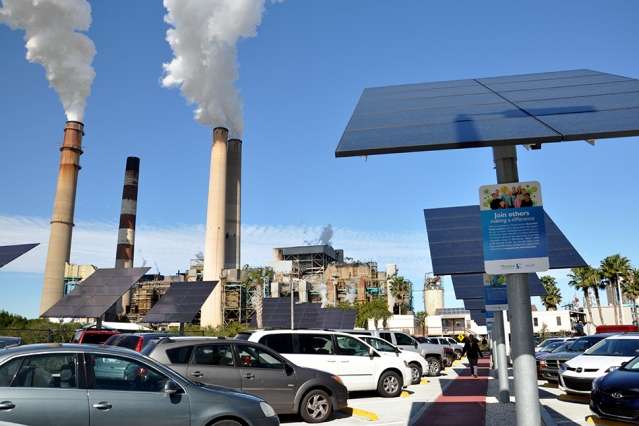A new study details why it's prudent to invest in carbon-free electricity now

With a single executive order issued at the end of March, the Trump administration launched a robust effort to roll back Obama-era climate policies designed to reduce U.S. carbon dioxide (CO2) emissions. Chief among those policies is the Clean Power Plan, which targets coal and natural gas-fired electric power plants that account for about 40 percent of the nation's CO2 emissions. Private and public-sector investors may see the executive order as a green light to double down on relatively cheap fossil fuels and reduce holdings in more costly, climate-friendly, non-carbon generation technologies such as wind, solar and nuclear. But they may want to think twice before making such transactions.
Electricity-sector investments in fossil-fuel-based infrastructure tend to be for the long-term, directing funds to power plants designed to run for more than 40 years, or 10 presidential terms. Return on such investments could be significant if U.S. emissions regulations remain weak (e.g. Trump's rollbacks persist in coming decades), but could shrink considerably if stringent, emissions-limiting climate policies are imposed for a substantial fraction of a plant's lifetime. Such policies would boost return on investment in non-carbon electricity generation technologies; but without them, clean energy investors run the risk of incurring unnecessary costs in technologies that are ultimately not required.
With long-term carbon-reduction policies uncertain, what is the wisest course of action for near-term electricity sector investment? Double down on carbon, go carbon-free, or mix it up?
By explicitly considering uncertainty in the future policy landscape, a new study in The Energy Journal by present and former researchers at the MIT Joint Program on the Science and Policy of Global Change offers a picture of the relative risks of these choices, and how much non-carbon generation should be developed in the near-term to minimize those risks. Using a novel framework that incorporates a computable general equilibrium (CGE) model of the U.S. economy into a computer program that evaluates decisions in the electric power sector under policy uncertainty, the researchers determined that the optimal electricity sector investment for the next decade would allocate 20-30 percent of new generation to non-carbon sources.
That's how much electricity sector decision-makers must hedge their bets to balance the risk of overinvesting in non-carbon electric power in a world where climate policy turns out to be weak, with the risk of underinvesting in non-carbon electric power in a world where climate policy is stringent.
"The risk of underinvesting in non-carbon is greater than the risk in overinvesting," says Jennifer Morris, the study's lead author and a research scientist at the Joint Program. "If you build a lot of non-carbon infrastructure and there's not a strict policy, then you have sunk some of your investment in unnecessary costs, but the operational costs are low and you'll continue to use that generation. But if you overinvest in fossil fuel infrastructure and a strict policy such as a carbon tax is imposed that requires dramatic emissions reductions, you'll end up with a lot of stranded assets. You'll need to not only shut down power plants but also invest more in non-carbon technology, which will cost you more because you didn't make previous non-carbon investments."
Few previous studies on electricity investments consider uncertainty in future carbon emissions limits, and of those that do, most use only a few scenarios and/or only examine the electric power sector, not the full economy, and therefore are not able to quantify economy-wide impacts. In this work, MIT researchers use a CGE model that represents the U.S. full economy and embed it within a dynamic programming framework where policy uncertainty is represented by sampling possible future carbon emissions limits. In this framework, different policy scenarios are each associated with a unique probability or likelihood of being implemented.
The model systematically explores different electric power investment decisions under sampled policy scenarios, and for each decision/policy combination, computes and compares cumulative costs over two investment periods extending from 2015 to 2030. Based on this analysis, the model identifies the optimal initial investment decision. Results show a clear advantage in shifting a considerable amount of investment dollars from carbon to non-carbon power sources in the near-term.
"Today there's a lot of uncertainty in how policy will unfold," says Morris. "Decision makers can either do nothing or allocate electricity sector investments to be best positioned for potential future policy changes. The key message of this study is that in the face of future climate policy uncertainty, it is wise to invest in some non-carbon generation now."
More information: Jennifer Morris et al. Hedging Strategies: Electricity Investment Decisions under Policy Uncertainty, The Energy Journal (2018). DOI: 10.5547/01956574.39.1.jmor
This story is republished courtesy of MIT News (web.mit.edu/newsoffice/), a popular site that covers news about MIT research, innovation and teaching.











